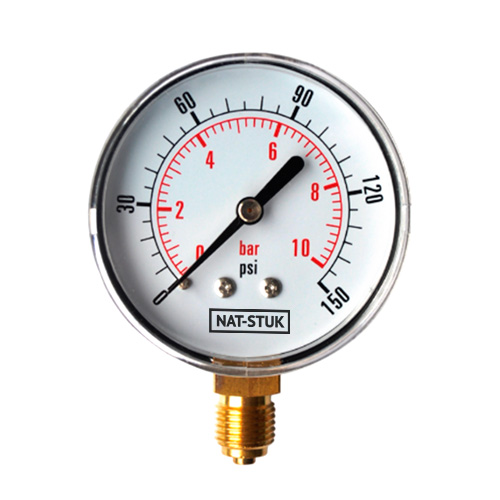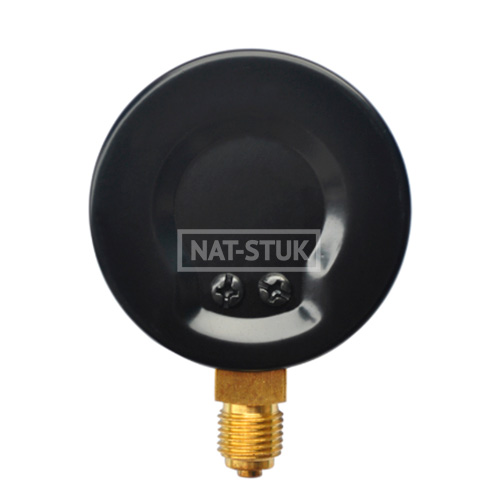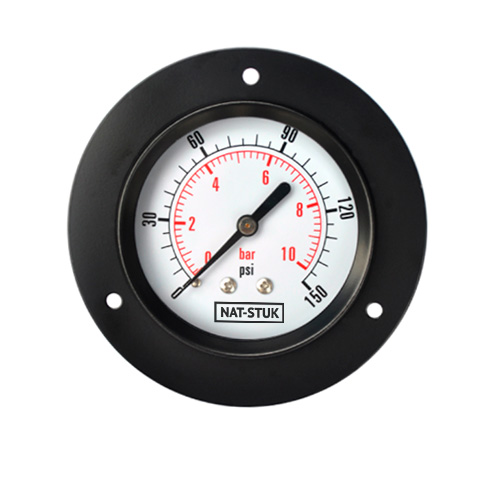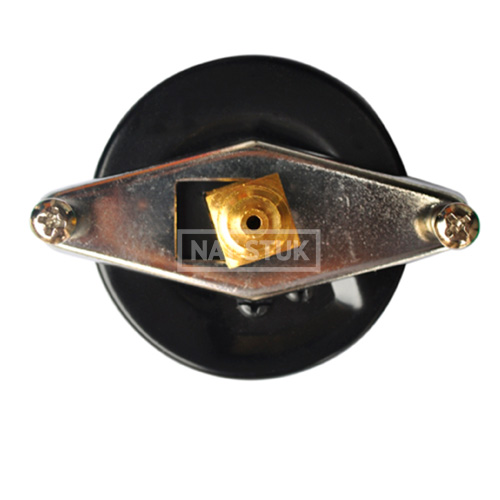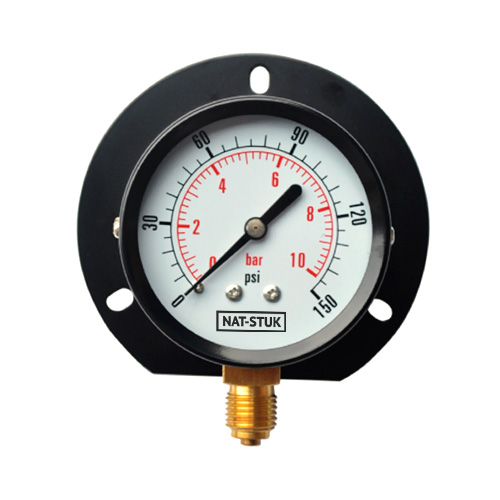Commercial Pressure Gauge
Commercial Pressure Gauge is particularly suited to measuring pneumatic systems, compressors, compressed air systems. Suitable for fluid medium which does not clog connection port or corrode copper alloy.
Specifications
Dial sizes: 1.5″, 2″, 2.5″, 3″, 4″ & 6″(40, 50, 63, 75, 100 & 150 mm)
Case: Steel case black painted.
Wetted parts: Brass
Lens: Acrylic
Pressure Range: Vac to 6,000 psi/Bar
Description
Commercial Pressure Gauge is particularly suited to measuring pneumatic systems, compressors, compressed air systems. Suitable for fluid medium which does not clog connection port or corrode copper alloy.
Specifications
Sizes: 1.5″, 2″, 2.5″, 3″, 4″ & 6″(40, 50, 63, 75, 100 & 150 mm)
Accuracy: ±3/2/3%(ASME B40.1 Grade B)
Case: Steel case black painted.
Ring: Steel case black painted (optional: chrome steel)
Lens: Acrylic
Wetted parts: Brass
Operating Temperature: Ambient: -40 to 60°C (-40°F to 140°F)
Process fluid: max 60°C (140°F)
Dial: Aluminum with black & red markings
Pointer: Black aluminum
Connection: 1/8″, 1/4″ or 1/2″ NPT or BSP bottom or back
Ranges: Vacuum to 6,000 psi/Bar
Protection degree: IP52
Dry
Protection
– If pressure gauges are to be used for steam service, a siphon tube filled with water must be installed between gauge and line to prevent live steam from entering the Bourdon tube.
– A gauge cock should be installed in the pressure line. This might be the standard shut-off valve or a needle valve for throttling pressure pulses.
– If severe pulsation exists, the gauge should be protected by adding a throttling orifice
screw in the gauge socket or by addition of a pulsation damper, such as a snubber.
– A diaphragm seal should be used in applications where process media should not come in contact with gauge.
We invite you to check out our post: When should you use liquid-filled pressure gauges?
Follow us on Twitter and Instagram



